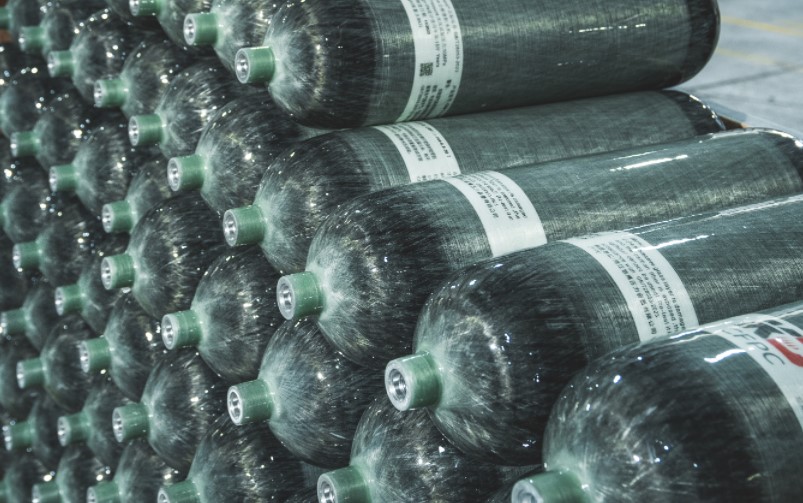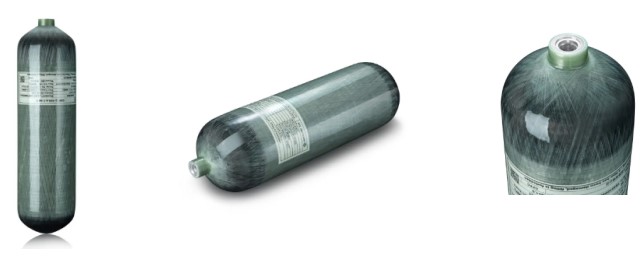Medical oxygen cylinders are essential tools in healthcare, supplying pure oxygen to patients in need. Whether it’s for emergency situations, surgical procedures, or long-term care, these cylinders play a vital role in supporting respiratory function. Traditionally, oxygen cylinders were made from steel or aluminum, but advancements in materials technology have introduced a new option—carbon fiber composite cylinders. These modern cylinders offer numerous benefits, making them increasingly applicable for medical use.
What Are Medical Oxygen Cylinders Used For?
Medical oxygen cylinders are designed to store and deliver oxygen at high pressure. Oxygen therapy is a common treatment for patients suffering from respiratory issues, low oxygen saturation levels, or conditions such as:
- Chronic Obstructive Pulmonary Disease (COPD): Patients with COPD often need supplemental oxygen to maintain adequate oxygen levels in their blood.
- Asthma and other respiratory conditions: Oxygen can provide immediate relief during severe asthma attacks.
- Post-surgery care: After surgery, especially under general anesthesia, oxygen is often needed to ensure proper lung function as the patient recovers.
- Trauma and emergency situations: Medical oxygen is used in emergency scenarios, such as heart attacks, severe injuries, or respiratory arrest.
- Hypoxemia: Oxygen therapy helps maintain oxygen levels in patients whose blood oxygen levels drop below the normal range.
Types of Oxygen Cylinders
Traditionally, oxygen cylinders have been manufactured using materials like:
- Steel: These are robust and durable, but their heavy weight can make them difficult to transport, especially in home-care situations.
- Aluminum: Aluminum cylinders are lighter than steel, making them more convenient for patients who need mobility.
However, the limitations of these materials, especially in terms of weight and portability, have paved the way for carbon fiber composite cylinders.
Carbon Fiber Composite Cylinders in Medical Use
Carbon fiber composite cylinders are gaining popularity in various industries, including healthcare, due to their unique properties. These cylinders are made by wrapping a polymer liner with carbon fiber material, creating a lightweight yet strong product. In medical applications, carbon fiber composite cylinders are increasingly being used for storing oxygen, providing several advantages over traditional steel and aluminum cylinders.
Key Advantages of Carbon Fiber Composite Cylinders
- Lightweight
One of the most significant benefits of carbon fiber composite cylinders is their weight. Compared to steel cylinders, carbon fiber options are substantially lighter. For example, a standard steel oxygen cylinder can weigh around 14 kg, while a carbon fiber composite cylinder of the same size might weigh just 5 kg. This difference is crucial in medical settings, where easy handling and transportation of oxygen cylinders can make a big difference, especially for mobile or home-care patients. - Higher Pressure Capacity
Carbon fiber composite cylinders can handle higher pressures compared to traditional cylinders. Most carbon fiber cylinders are certified for working pressures of up to 200 bar (and in some cases, even higher), allowing them to store more oxygen in a compact space. For medical applications, this means that patients can have access to a greater supply of oxygen without needing to change cylinders as frequently. - Durability and Safety
Despite being lightweight, carbon fiber composite cylinders are incredibly durable. They are resistant to impact, which adds a layer of safety in environments where cylinders may be subject to rough handling, such as in ambulances or emergency rooms. The polymer liner within the carbon fiber shell ensures that the cylinder remains intact even under high pressure, reducing the risk of leakage. - Portability and Convenience
For patients requiring oxygen therapy at home or on the go, portability is a key concern. The lightweight nature of carbon fiber composite cylinders makes them easier to transport and move around, whether it’s inside a hospital or when patients are out and about. Many of these cylinders are designed with ergonomic features to enhance convenience, such as easy-grip handles or wheeled carts. - Cost-Efficiency in the Long Term
Although carbon fiber composite cylinders are more expensive upfront than traditional steel or aluminum cylinders, they provide cost-efficiency in the long term. Their durability and higher capacity reduce the need for frequent refills or replacements. Additionally, their lightweight nature helps reduce transportation and handling costs in medical facilities.
Are Carbon Fiber Composite Cylinders Applicable for Medical Use?
Yes, carbon fiber composite cylinders are fully applicable for medical use. They meet the necessary safety and regulatory standards required for storing medical-grade oxygen. These cylinders are often certified by relevant health and safety authorities and are used in hospitals, ambulances, and home-care settings around the world.
Some of the key regulatory standards that carbon fiber composite cylinders must comply with include:
- ISO standards: Many carbon fiber composite cylinders are certified under ISO standards, which cover the safety and reliability of gas cylinders.
- CE marking in Europe: In European countries, these cylinders must be CE-marked, indicating they meet health, safety, and environmental protection standards for medical devices.
- FDA and DOT approvals: In the United States, carbon fiber composite cylinders used for medical oxygen must be approved by the Food and Drug Administration (FDA) and the Department of Transportation (DOT).
The Future of Medical Oxygen Cylinders
As healthcare continues to evolve, the demand for more efficient, portable, and durable oxygen storage solutions is growing. Carbon fiber composite cylinders are likely to play an even more significant role in the future of oxygen therapy. With their ability to store high-pressure oxygen in a lightweight, safe, and durable container, they provide a practical solution to meet the needs of both patients and healthcare providers.
While the initial cost may be higher, the long-term benefits of carbon fiber composite cylinders—such as reduced transportation costs, lower risk of damage, and greater oxygen storage—make them an attractive option for medical use. These cylinders are particularly useful in mobile medical environments and for patients who require regular oxygen therapy but want to maintain a degree of independence and mobility.
Conclusion
In conclusion, carbon fiber composite cylinders are a valuable advancement in the field of medical oxygen storage. They offer a lighter, stronger, and more durable alternative to traditional steel and aluminum cylinders, improving both patient care and operational efficiency. As healthcare continues to prioritize mobility, safety, and convenience, carbon fiber composite cylinders are poised to become a more common fixture in medical settings, providing reliable oxygen delivery in a lightweight and highly durable package.
Post time: Oct-12-2024



